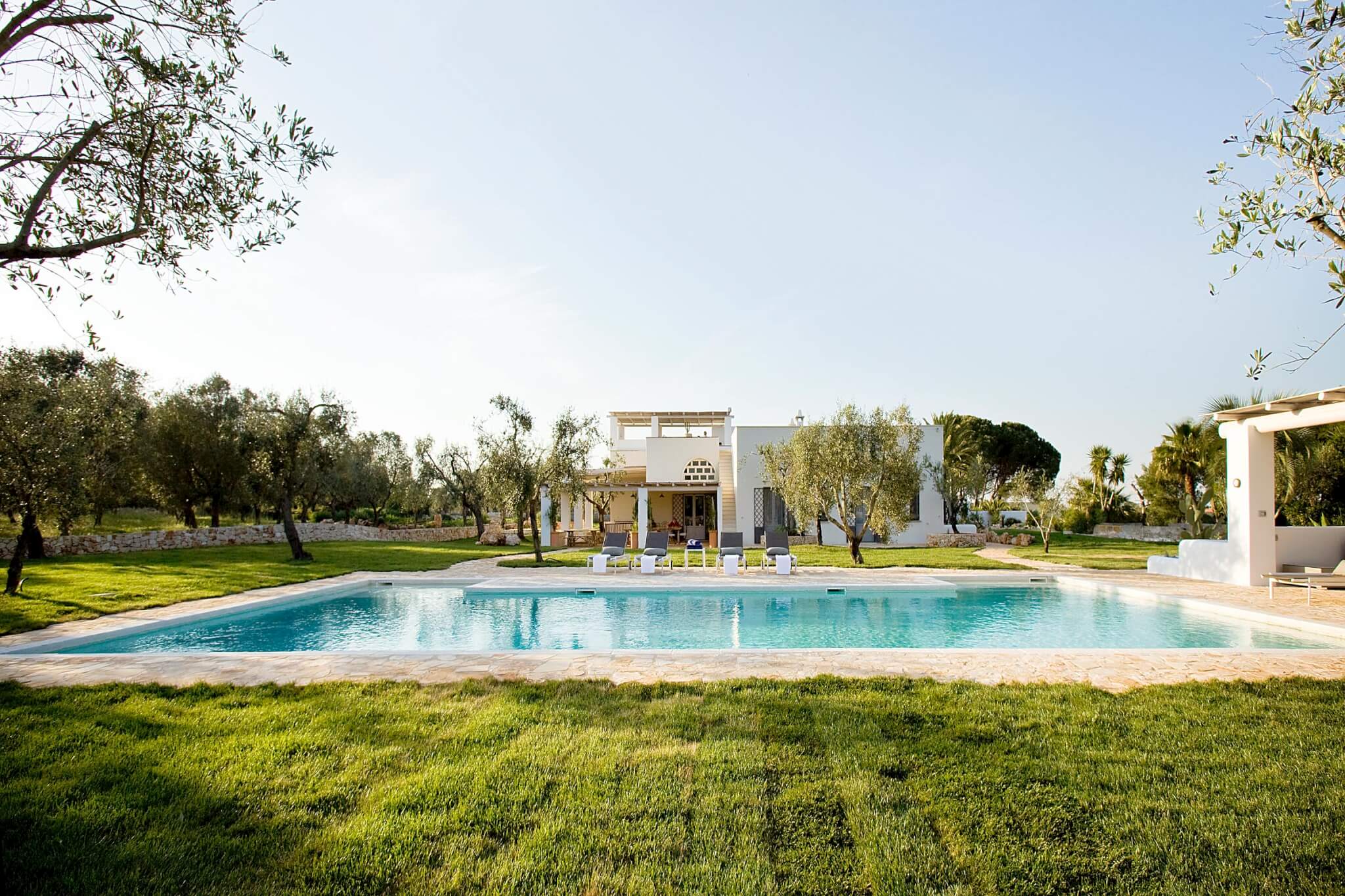Puglia is a world away from the rest of Italy. With its rocky, flat terrain and its abundant cacti, it doesn’t look like Italy. And with its arid, salty environs, it certainly doesn’t feel like Italy. But the country’s southeasternmost region, as I came to find, may be Italy in its truest form.
The rough, red earth is broken into rows and rows of perfectly planted trees. I looked out on them, unaware and unappreciative, as I made my way south from the Brindisi airport to Masseria Cisterna Rossa. Situated in Ruffano, the spectacular villa is part of the Thinking Traveller’s impressive portfolio of luxury rental properties.
An afternoon massage helped ease my jet lag, at which point I asked my host: What kind of trees are those? Olive, he replied with a smile. I looked out on the groves surrounding us, this time in awe. As it turns out, Puglia is home to some 60 million olive trees, many of them so ancient that they enjoy government protection. The region where the Adriatic meets the Ionian produces nearly 40% of the country’s olive oil.
The setting fades into the background, however, when compared to the masseria itself — a beautifully restored fortified farmhouse. Inside, the expansive living spaces serve as a makeshift gallery for a magnificent art collection. An alfresco dining area offers a view of the expansive grounds, from the organic vegetable garden to the seductive pool, which simply begs to be occupied. But the pièce de résistance, no doubt, is the rooftop terrace, providing panoramic vistas of the surrounding countryside that confirm this fact: This is Italy at its finest.
Dinner that evening set the tone for the meals ahead: a delightful excess of splendid cheeses, fresh vegetables, handmade pasta, delicate fish and rich desserts. And, oh, the wine. We lingered late into the night, sitting under the stars, talking, laughing and carrying on. When at last I made my way to my room, satiated and sleepy, I collapsed into bed for the best night’s sleep of my life.
In the days that followed, I lounged at a nearby beach, tucked away and sparsely populated. I gorged myself with fresh burrata, lobster straight from the sea and taralli — those addictive ring-shaped snacks that are synonymous with Puglia. I tried my hand at making orecchiette (with some success, might I add). I strolled the streets of Gallipoli, the seaside city whose old town center sits on a tiny island, completely surrounded by 14th century defensive walls. I marveled at the iconic trulli dotting the countryside; the conical structures, many of them still occupied, date as far back as the 16th century.
And I came to understand why this place is the perfect refuge for natives escaping the tourist hot spots that become so overrun during high season. Why they have long held this one so close to the vest. And why I certainly will be returning. Long live Puglia.
If You Go
GETTING THERE
Puglia’s two main airports, Bari and Brindisi, are easily accessed from larger Italian cities and other European destinations via Alitalia. Bari services the northern half of the region, while Brindisi is ideal for visiting the south.
WHEN TO GO
The region experiences some 300 sunny days a year. May through September is the most popular time to visit, as the sea warms and the beaches come alive during the summer season.
WHERE TO STAY
The Thinking Traveller (thethinkingtraveller.com) offers impeccable luxury rentals catering to a wide range of travelers seeking a variety of accommodations, amenities and experiences.
GETTING AROUND
Puglia is made up of many towns and villages stretched across the countryside, requiring a rental car or driver. Employing a local who knows the best routes is the best bet.
WHAT TO EXPECT
Time slows down in this Italian oasis. There truly is something for everyone, from peaceful beaches to historical sites to world-class cuisine and beyond.





